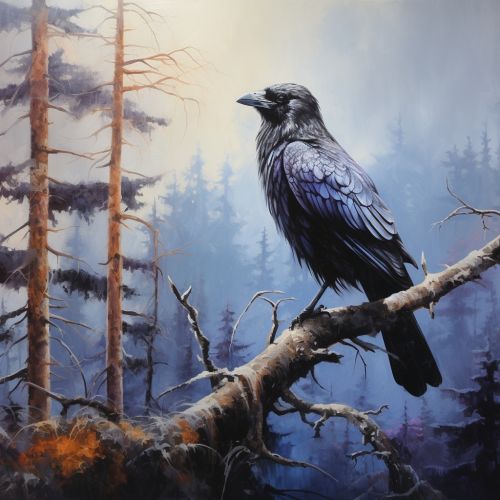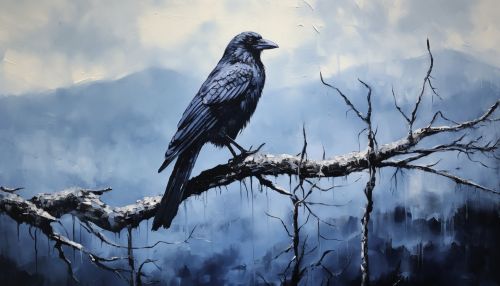Raven (mythology)
Introduction
The raven is a bird that has held a prominent place in the mythology of numerous cultures worldwide. This article explores the various roles and symbolic meanings of the raven in different mythologies, including its representation as a trickster, a messenger of the gods, a symbol of prophecy, and a sign of ill-omen.
Role in Native American Mythology
In many Native American cultures, the raven is viewed as a trickster, similar to the coyote. This role is most prevalent in the myths and legends of the Northwest Coast, including the Tlingit, Haida, and Tsimshian.


The raven is often depicted in these stories as a cunning and mischievous character, known for his cleverness and wit. For example, in a popular Tlingit legend, the raven is said to have stolen the sun, moon, and stars from a rich and greedy chief, releasing them into the sky for all to enjoy.
Role in Norse Mythology
In Norse mythology, the raven holds a significant place, particularly in relation to the god Odin. Odin is often depicted with two ravens, Huginn (thought) and Muninn (memory), who fly all over the world to bring him information.
These ravens are not just messengers, but also symbols of Odin's power and wisdom. They represent his ability to see beyond the physical world, into the realm of the spiritual and the unknown. This association with Odin has led to the raven being seen as a symbol of prophecy and divination in Norse culture.
Role in Celtic Mythology
In Celtic mythology, the raven is also seen as a prophetic creature. The goddess Morrigan, a figure associated with war and fate, is often linked with ravens. In some stories, she takes the form of a raven herself.
The raven in Celtic mythology is also associated with the battlefield. It was believed that ravens would fly over battlefields, choosing who would die and who would live. This has led to the raven being seen as a symbol of death and transformation.
Role in Other Cultures
Beyond these cultures, the raven also appears in the mythology of many other societies. In Greek mythology, for example, the raven was once a white bird, but was turned black by Apollo for delivering bad news. In Inuit mythology, the raven is seen as a culture hero, a figure who helped to shape the world and humanity.
Conclusion
From trickster to prophet, messenger of the gods to symbol of death and transformation, the raven holds a multitude of meanings in various mythologies. Its black plumage, intelligent gaze, and haunting call have made it a powerful symbol in the human imagination, a bird that straddles the line between the known and the unknown, the mortal and the divine.
